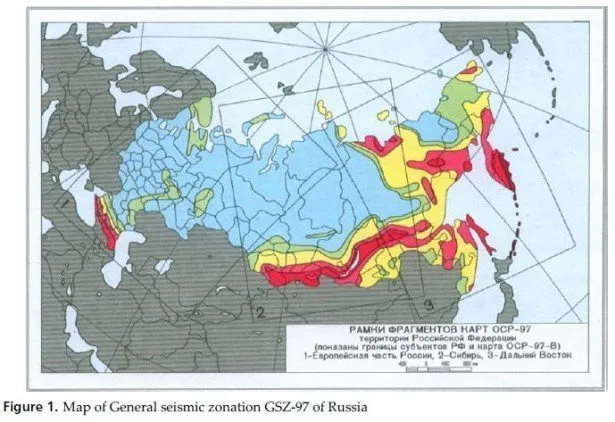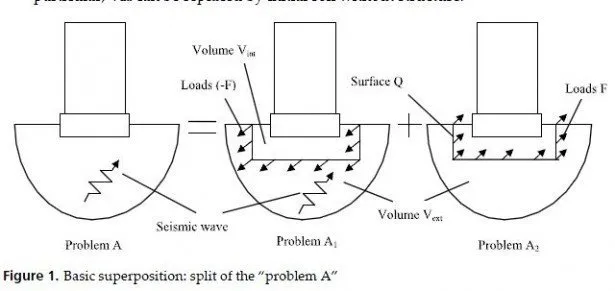The response quantities obtained from both the response-spectrum analysis and the timehistory analysis included bending moments, shear forces, axial forces, and displacements. A detailed review of the response results showed that the observations from the shear forces and the axial forces were the same as those from the bending moments. Given this, only the bending moments and the displacements were used for the evaluation of the seismic performance of the bridge. However only the results for bending moments are shown there, the results for deflections can be found in [17].
For simplicity in discussing the results, the simultaneous excitations in the longitudinal and vertical directions are referred to as excitations in the longitudinal direction (or longitudinal excitations), and those in the transverse and vertical directions are referred to as excitations in the transverse direction (or transverse excitations). This is the case for both the responsespectrum and the time-history analyses.
To assist in understanding the results from the analyses, it is useful to describe the convention for the moments, as used in this study. In reference to the coordinate system shown in Fig. 5, longitudinal moments in the bridge girder are those that act about the Yaxis, and transverse moments are those that act about the Z-axis. For the piers, the moments that result from longitudinal excitations and act about the Y-axis are referred to as “moments in the longitudinal direction”, and those that result from transverse excitations and act about the X-axis are referred to as “moments in the transverse direction”.
The moments at the joints of the model resulting from the response-spectrum analysis represent the maximum absolute values and by definition are positive. The time-history analysis provided a comprehensive set of results for each excitation motion. Time histories and maximum positive and negative values for the moments and displacements were obtained for the joints of the model. Moment and displacement envelopes for both the girder and the piers were determined using the largest absolute values of the computed (positive and negative) maxima for each of the selected sets of ground motions.
The comparisons of bending moments are shown in Figs. 15 and 16. Figure 15(a) shows the envelopes of the longitudinal moments in the bridge girder for seismic actions in the longitudinal direction, and Fig. 15(b) shows the envelopes of the transverse moments for seismic actions in the transverse direction. The moment envelopes are plotted using the corresponding values at selected sections along the bridge girder. Similarly, Figs. 16(a) and 16(b) present the moment envelopes for pier P31 for excitations in the longitudinal and transverse directions respectively. The moment envelopes for the other piers are similar to those for pier P31, and they are not shown here. The designation “Design” in Figs. 15 and 16 is for the design responses which were calculated by [7], and “UHS” is for the responses due to seismic actions represented by the uniform hazard spectrum. Furthermore, the designations “World-wide”, “Saguenay”, “Miramichi”, and “Simulated” are respectively for the responses due to the selected world-wide records short-period set (Fig. 10), the Saguenay records (Fig. 12), the Miramichi records (Fig. 13), and the simulated motions short-period hazard set (Fig. 14(a)).
For the purpose of clarity, the results from the response-spectrum analysis (i.e., the “Design” and the “UHS” results) are discussed first. It can be seen from Fig. 15(a) that for the seismic actions in the longitudinal direction, the UHS envelope of the moments in the bridge girder is somewhat higher than the design envelope. Also, the values of the UHS envelope for the pier (Fig. 16(a)) resulting from the longitudinal seismic actions are larger than those of the design envelope in the upper 25 m of the pier. The largest differences are approximately 20%. These observations for the longitudinal seismic actions were expected because the periods of the predominant longitudinal and vertical modes of the bridge are shorter than 1.5 s, i.e., these are within the range in which the uniform hazard spectrum is higher than the design spectrum (Fig. 3). For seismic actions in the transverse direction, the UHS envelopes of the moments in the bridge girder and in the pier (Figs. 15(b) and 16(b), respectively) are all smaller than the design values. This is because the uniform hazard spectrum is lower than the design spectrum for the periods of the predominant transverse modes, i.e., periods longer than approximately 2.0 s (Fig. 3).
The 20% exceedance of the design responses by those from the UHS seismic actions in the longitudinal direction does not represent any concern regarding the seismic safety of the bridge. This is because of the following two reasons. First, conservative assumptions are involved in the design through the use of factored material strengths and specified safety factors, and therefore the actual capacity (i.e., resistance) of the bridge is substantially larger than the demands due to design loads. For example, considering only the resistance factors for concrete and reinforcing steel used in the design (i.e., φc=0.75 and φs=0.85, as specified in the Design Criteria [5]), the nominal flexural resistance of the bridge is about 20% larger than the design resistance. Other safety factors involved in the design, associated with the specified safety index [5], provide even larger resistances relative to the design resistance of the bridge.
The second reason is related to the conservatism of the response resulting from the uniform hazard spectrum. By definition, the uniform hazard spectrum at the bridge location represents the envelope of the spectral contributions of all possible earthquakes in the surrounding area that affect the seismic hazard at the location. This implies that the seismic response resulting from the uniform hazard spectrum represents the envelope of the response contributions from earthquakes with different magnitudes and at different distances from the bridge location, assuming that all the earthquakes occur at the same time.
Obviously, the response from such combined earthquake actions is much larger than the responses from each of the earthquakes considered separately. These considerations clearly show that the response-spectrum analysis using the uniform hazard spectrum provides significantly larger responses than those from expected seismic ground motions represented by that spectrum.


In regard to the response results obtained from the time-history analysis of the model subjected to the selected sets of excitations, it can be seen in Figs. 15 and 16 that the maximum moments are all smaller than the design responses for both the longitudinal and transverse excitations. This was expected based on the spectral characteristics of the excitation motions. As described earlier, the response spectra of the excitation motions used in the analysis (i.e., the World-wide short-period set, the Saguenay set, the Miramichi set, and the simulated short-period set) are all lower than the design spectrum for periods longer than approximately 0.5 s (Figs. 10, 12-14), i.e., within the period range of the longitudinal and transverse modes that produce almost the entire response. The contributions of the modes with periods below 0.5 s, where the spectra of the excitation motions exceed the design spectrum, are very small.



